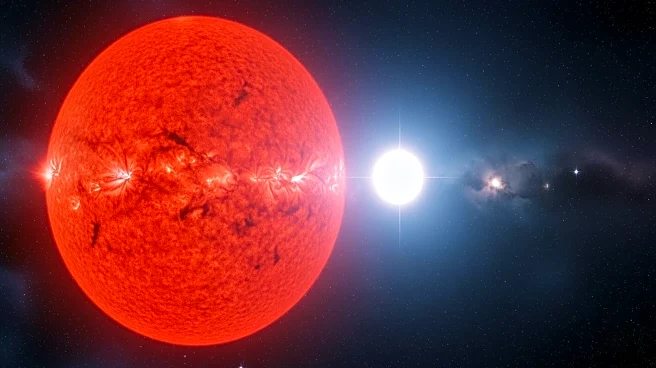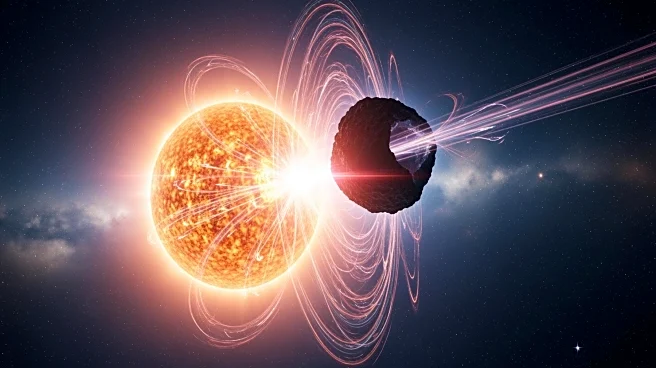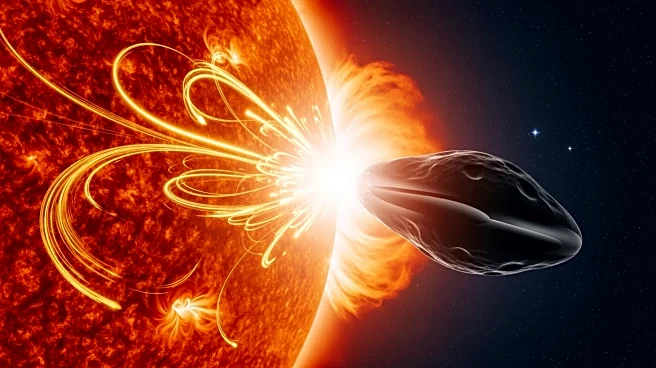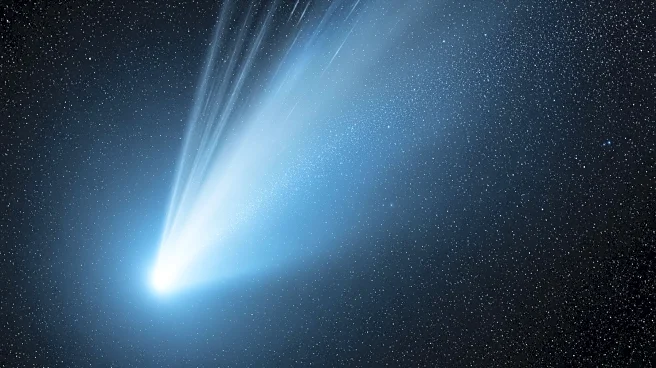What's Happening?
Astronomers have discovered a closely orbiting companion star to the red giant star π1 Gruis, located about 530 light-years from Earth. This discovery was made using the Atacama Large Millimeter/submillimeter
Array (ALMA) in Chile. The companion star's nearly circular orbit around the red giant challenges previous predictions of elliptical orbits for such companions. This finding could necessitate revisions to current models of how companion stars interact with red giants during their late evolutionary stages.
Why It's Important?
The discovery of a companion star to π1 Gruis provides valuable insights into the complex processes that occur during the red giant phase of stellar evolution. Understanding these interactions is crucial for predicting the future of our own solar system, as the sun is expected to become a red giant in about five billion years. The presence of a companion star can significantly influence the evolution of a red giant, potentially affecting the formation of planetary nebulae and the eventual transition to a white dwarf.
What's Next?
Further research is needed to explore the implications of this discovery on existing models of stellar evolution. Astronomers will likely conduct additional observations to better understand the dynamics of the companion star's orbit and its impact on the red giant. This research could lead to a deeper understanding of the role of companion stars in the life cycles of red giants and their influence on surrounding planetary systems.
Beyond the Headlines
The discovery of a companion star to π1 Gruis highlights the importance of advanced observational technologies like ALMA in uncovering the hidden complexities of the universe. This finding may prompt a reevaluation of the assumptions underlying current models of stellar evolution, particularly regarding the interactions between red giants and their companions. The study of such systems could also provide insights into the potential habitability of planets orbiting red giants and the conditions necessary for life to exist in these environments.











